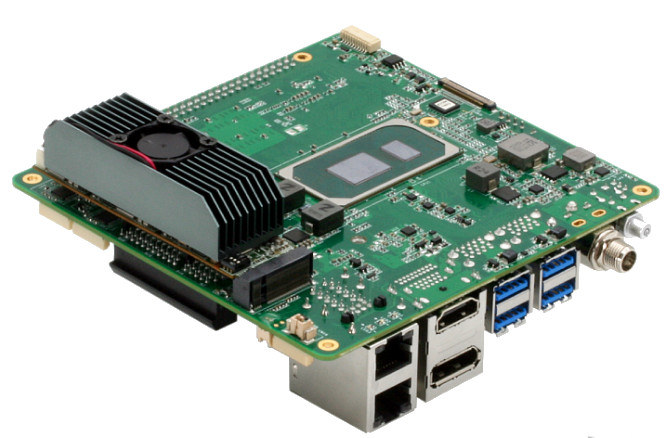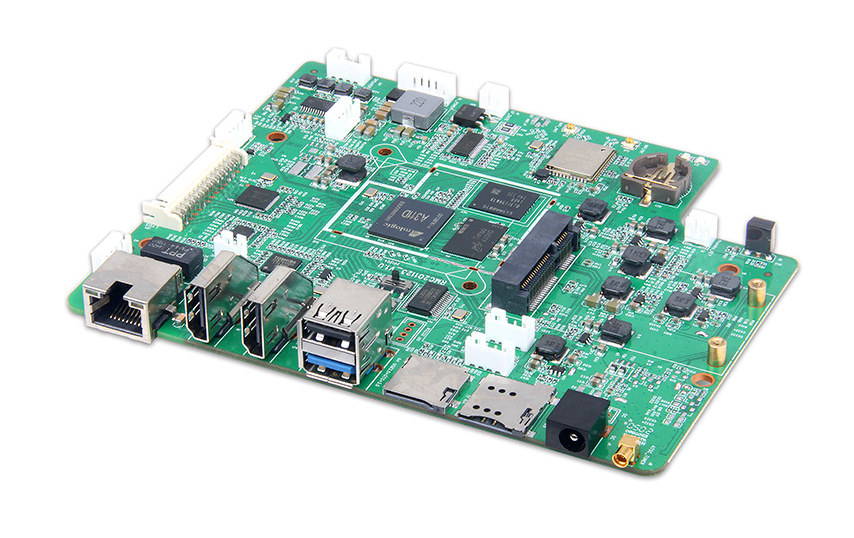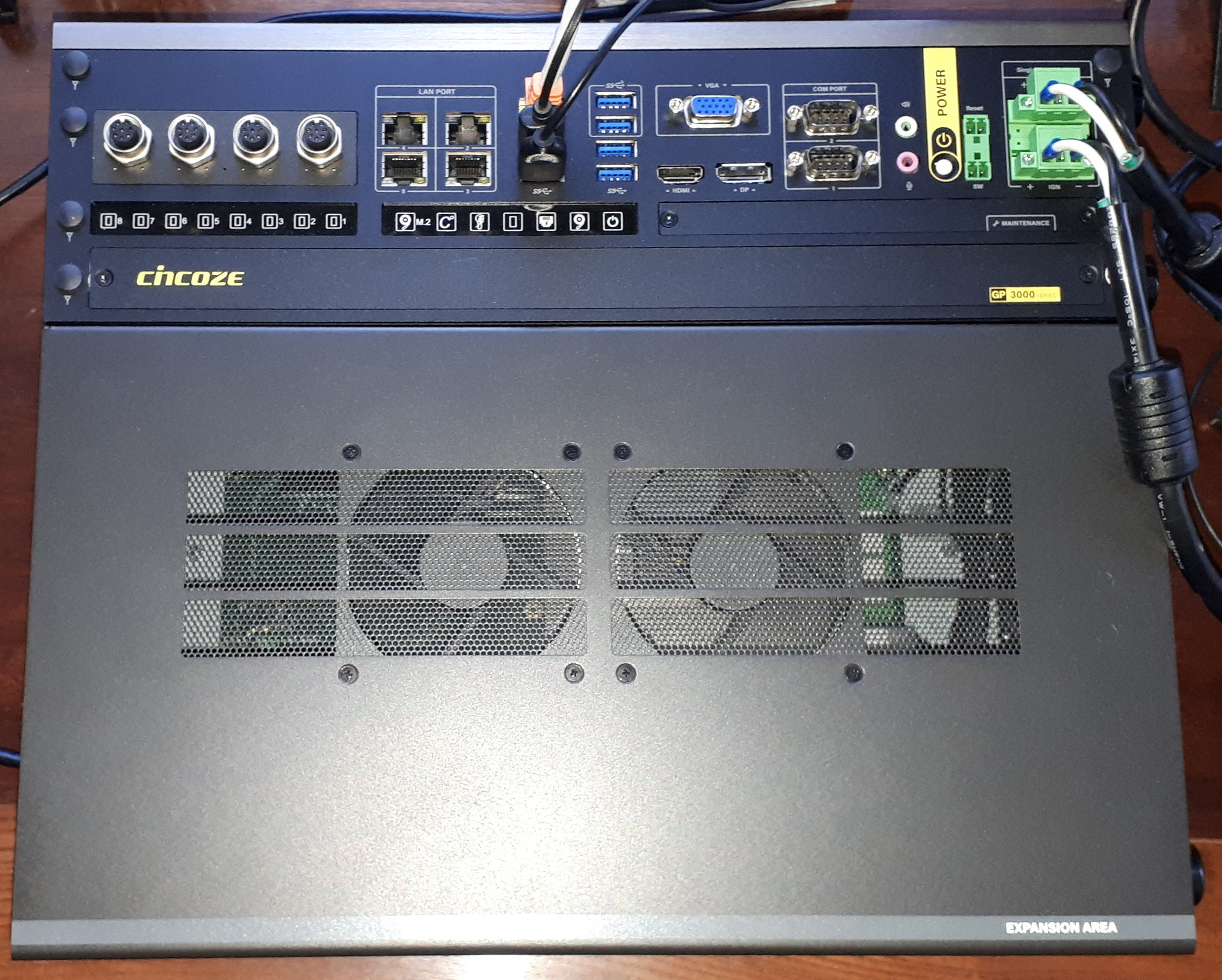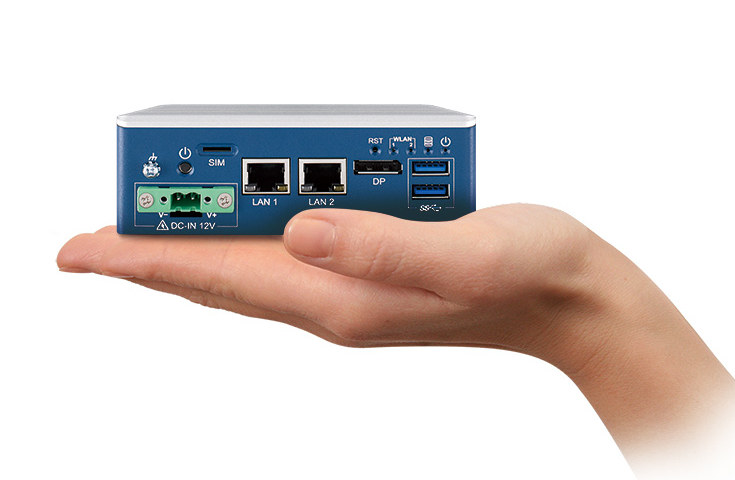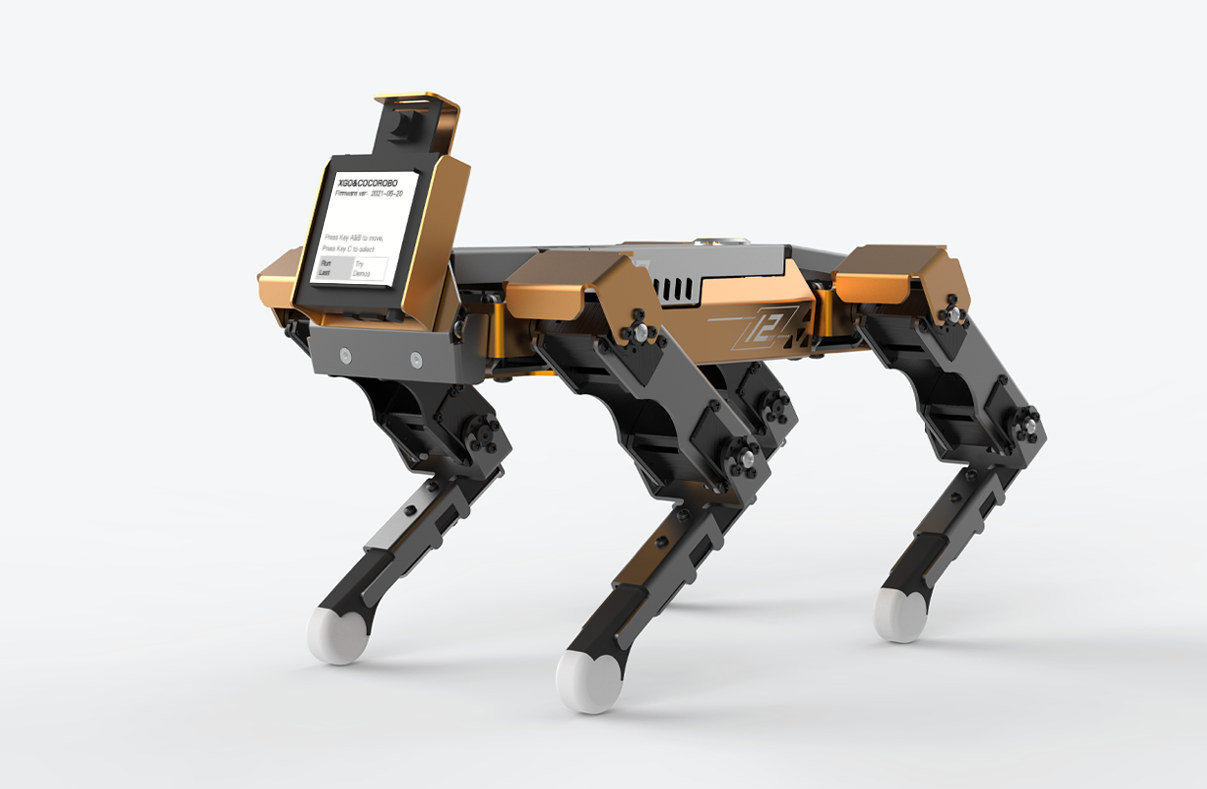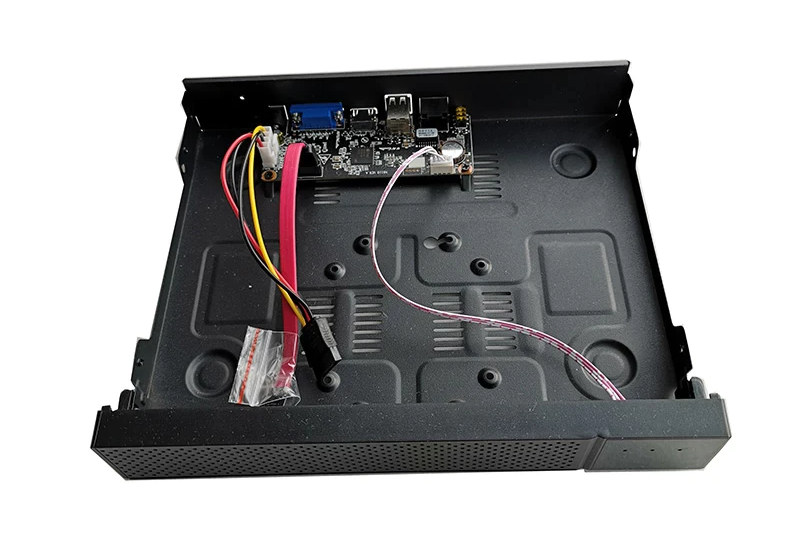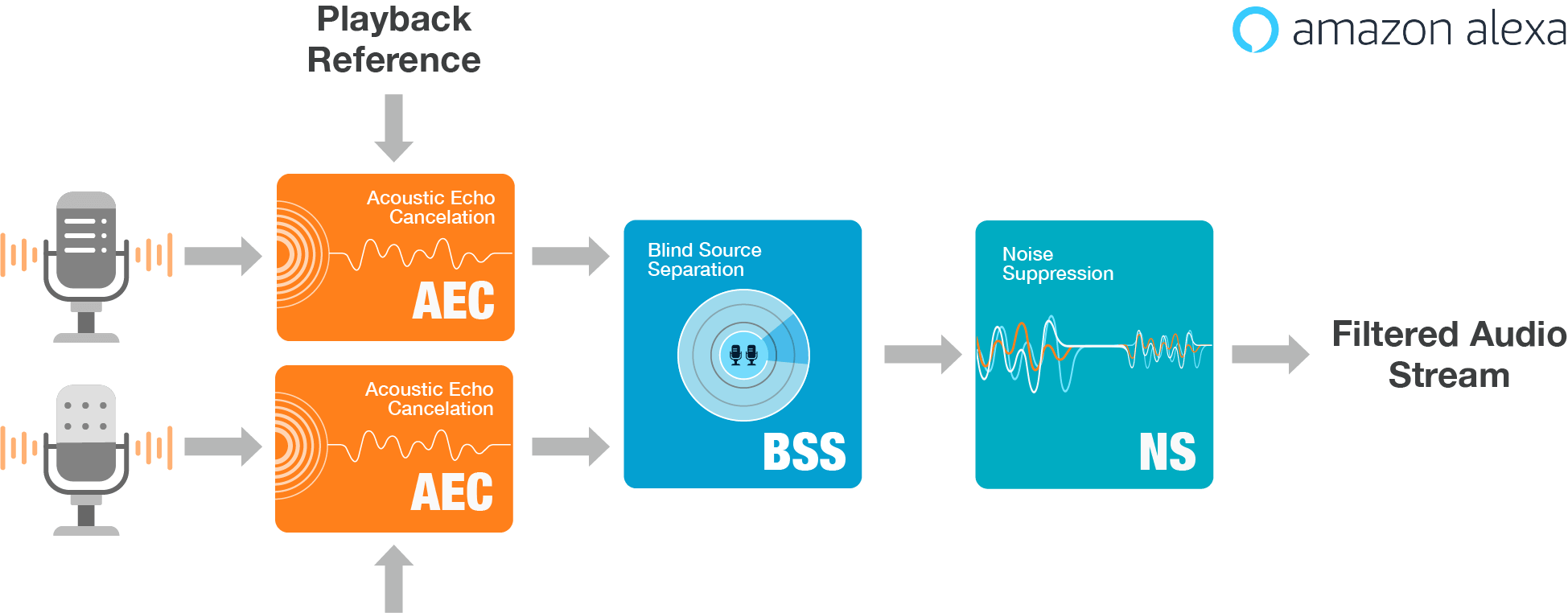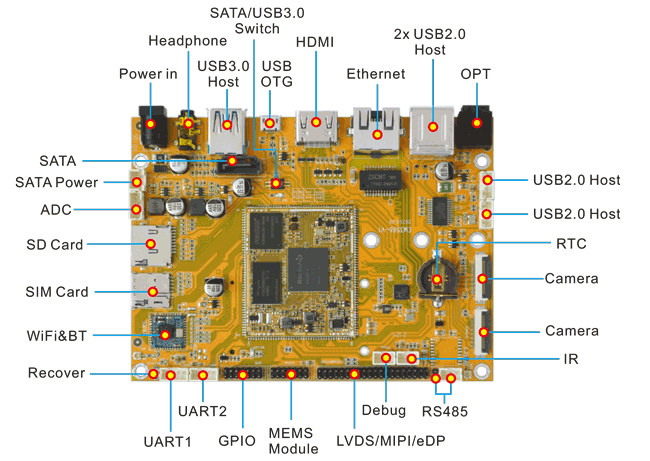Ever since the launch of Intel Atom Cherry Trail powered Up Board SBC in 2015, AAEON has kept launching more UP boards with faster, yet still low power processors, as well as complete turnkey solutions based on their x86 SBC such as the UP Xtreme Smart Surveillance kit. The company has now started taking pre-orders for the UP Xtreme i11 Tiger Lake SBC, and a UP Xtreme i11 Edge Compute Enabling kit mini PC based on the board will become available in Q3 2021. The board features a choice of Intel 11th generation Tiger Lake Embedded “GRE” Core or Celeron processors, an Intel Altera MAX V FPGA, up to 64GB RAM, Gigabit Ethernet, 2.5GbE networking, and more. UP Xtreme i11 SBC Specifications: Tiger Lake “E”/”GRE” SoC (one or the other) Intel Core i7-1185G7GRE quad-core/8-thread processor @ up to 4.4 GHz with 96 EU Intel Iris Xe Graphics; up to 28W […]
Geniatech DB10 – An AI development board with Amlogic A311D SoC, HDMI input, optional TV tuner
Amlogic A311D hexa-core Cortex-A73/A55 AI processor has found its way into a limited number of platforms including Khadas VIM3 SBC, Zora P1 development board for Orbbec 3D cameras, as well as the upcoming Jevois Pro AI camera. Another development board that takes advantage of the Amlogic A311D processor is Geniatech DB10 which ships with up to 4GB LPDDR4, up to 64GB eMMC flash, and offers interesting features like a digital TV tuner, HDMI input, support for 3G/4G modems, and more. Geniatech DB10 specifications: SoC – Amlogic A311D hexa-core processor with quad-core Arm Cortex-A73, dual-core Arm Cortex-A53 processor, Arm Mali-G52 MP4 (6EE) GPU with OpenGL ES 3.2, Vulkan 1.0 and OpenCL 2.0 support, 5 TOPS NPU System Memory – 2GB LPDDR4 (4GB optional) Storage – 16GB eMMC flash (8 to 64GB optional) Video Output HDMI 2.1 up to 4Kp60 Dual-channel LVDS (shared with eDP) via 30-pin connector Input HDMI input up […]
Cincoze GP-3000 review – An expandable Xeon-based GPU computer
Cincoze GP-3000 is an expandable high-performance GPU computer. It consists of either a 9th or 8th generation Intel processor-powered embedded computer which can be expanded with Cincoze’s proprietary GPU Expansion Box (GEB) capable of housing up to dual 250W full-length graphic cards. Additional I/O expansion is also possible through the use of various modules. With a total 720W power budget the GP-3000’s additional GPU performance massively accelerates complex industrial AI and machine vision tasks. As a rugged computer, the GP-3000 has passed a series of stringent quality assurance tests and industry standards including MIL-STD-810G military standard, E-mark for in-vehicle applications, and EN50155 (EN 50121-3-2 only) for rolling stock environments. It can withstand hot and cold temperature extremes, shock and vibration, and high electromagnetic radiation. In this review, I’ll cover some performance metrics from both Windows and Ubuntu and also discuss the thermals. Hardware Overview The GP-3000 (see PDF datasheet) loaned […]
Vecow unveils Intel Atom x6211E based fanless Box PC & Pico-ITX motherboard
Vecow EPBC-1000 2.5-inch/Pico-ITX single board computer powered by an Intel Atom x6211E Elkhart Lake processor, and found in the company’s PBC-1000 ultra-compact fanless embedded box PC, is designed for edge applications such as intelligent control, energy management, M2M, In-Vehicle Infotainment (IVI), factory automation, and any AIoT or Industry 4.0 applications. Vecow EPBC-1000 Pico-ITX board and PBC-1000 embedded mini PC specifications: SoC – Intel Atom x6211E dual-core EIkhart Lake processor @ 1.20 GHz / 3.0 GHz (Turbo), with 16 EU Intel UHD graphics @ 350 MHz / 750 MHz, 1.5MB cache; 6W TDP System Memory – 1x DDR4 3200MHz SO-DIMM up to 32GB RAM Storage – 1x SATA III (6Gbps) port Video Output – 1x DisplayPort up to 4096 x 2160 @ 60Hz Audio 1x Mic-in, 1x Line-out Realtek ALC888S-VD, 7.1 Channel HD audio codec Networking 2x Gigabit Ethernet port via Realtek RTL8119I Ethernet Controllers Optional WiFi/Bluetooth or 4G LTE via […]
XGO Mini Pro robot dog features Kendryte K210 AI processor (Crowdfunding)
[Update: Initially published on July 30th, XGO Mini Pro robot dog is now up on Kickstarter. While it was listed on the Kendryte K510 product page, it is only offered with the earlier Kendryte K210 in the crowdfunding campaign] Kendryte K510 RISC-V AI processor is the successor of Kendryte K210 with much more AI processing power (2.5/3 TOPS) that makes it suitable for robotics projects demanding much lower latency and quasi-real-time inference. One of the first products to be compatible with both Kendryte K510/K210 capabilities is Luwu Intelligence Technology’s XGO Mini Pro, a four-legged robot that looks like a dog with a tiny head providing the “smarts” for the system including face detection, image recognition, object tracking, voice recognition, and so on. We first found the description of the robot on Canaan’s website is rather short with an explanation that when equipped with is equipped with a 9-axis IMU and […]
$23 N6110E NVR supports AI features, 10TB SATA drive, up to 10 video channels
Network video recorders (NRV) typically cost a couple of hundred dollars, but in the past, we noted a low-cost, entry-level NVR with a single Ethernet port may sell for under $50. But now, I’ve been made aware that $20 Linux-based NVR’s had shown up on Aliexpress either based on XM8536D processor, or SigmaStar SSR621Q dual-core Cortex-A7 processor. I’ll look at the N6110E model with the latter that sells for $22.99 plus shipping as it includes an enclosure and is said to support up to 10 channels, as well as AI features such as face & human body detection, “auto tracking” (vehicle tracking?), and mixed-traffic detection. N6110E NVR specifications: SoC – SigmaStar SSR621Q processor/DSP with two Cortex-A7 cores, 256MB DDR3 RAM according to linux-chenxing Video decoding – H.265 , H.264 up to 1x 8MP @ 30 fps, 1x 5MP @ 30 fps, 2x 4MP @ 30fps, 4x 3MP @ 20 fps, […]
Amazon Alexa certified ESP AFE leverages ESP32-S3 AI & DSP instructions
While most Amazon Alexa certified products are hardware designs, Amazon website also includes a Software Audio Front End (AFE) Dev Kits section that lists software algorithms that optimize audio detection in noisy environments, and the latest addition is Espressif’s Audio Front-End algorithms, or ESP AFE for shorts, that have recently been qualified for Amazon Alexa devices. It’s not the first Alexa certified solution from Espressif Systems, as both companies have worked together in the past with audio products like the ESP32-PICO-V3-ZERO Alexa Connect Kit Module or ESP32-Vaquita-DSPG board The algorithms were created by Espressif’s AI Lab team who used the AI and DSP instructions inside ESP32-S3 processor to optimize the code. The algorithms only utilized 12 to 20% of the CPU, as well as 220 KB of internal and 240 KB of external memory, leaving extra resources for other applications running in the wireless SoC. The ESP AFE is said […]
Boardcon EM3566 Linux SBC is powered by a Rockchip RK3566 System-on-Module
Another day, another platform based on Rockchip RK3566 quad-core Cortex-A55 AIoT processor with Boardcon EM3566 SBC powered by a Rockchip RK3566 based System-on-Module (SoM). The single board computer comes with up to 2 to 8GB LPDDR4 RAM, 4GB to 32GB eMMC flash, SATA and NVMe SSD support, HDMI, MPI DSI, and eDP display interfaces, Gigabit Ethernet, as well as expansion options through M.2 and mPCIe sockets. CM3566 RK3566 System-on-Module Let’s check out CM3566 CPU module which offers the following specifications: SoC – Rockchip RK3566 with a quad-core Cortex-A55 processor @ up to 1.8GHz, Arm Mali-G52 2EE GPU with support for OpenGL ES 1.1/2.0/3.2. OpenCL 2.0. Vulkan 1.1, 0.8 TOPS AI accelerator, 4K H.265/H.265/VP9 video decoder, 1080p100 H.265/H.264 video encoder. System Memory – 2GB LPDDR4 (up to 8GB) Storage – 4GB eMMC flash (Up to 32GB) 186 castellated holes with signals for Storage – 2x SDMMC, SATA Display – LVDS/MIPI DSI, […]


